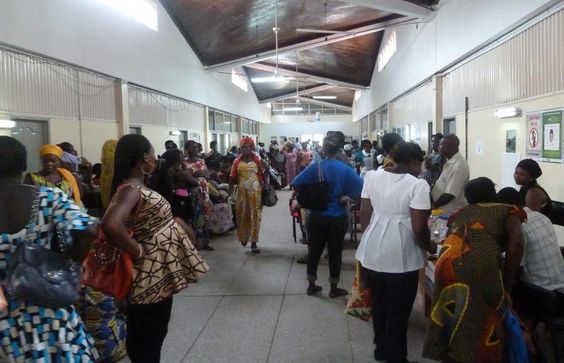By Brenda C. Ninsiima
Overcrowding in hospitals is a critical issue, particularly in developing countries where healthcare systems are under immense strain. This challenge is exacerbated by rapidly growing populations, insufficient healthcare infrastructure, and limited access to trained medical personnel. In many rural areas, hospitals are overwhelmed with patients suffering from various ailments, leaving little room for specialized care. One significant aspect of hospital overcrowding is the large number of uncomplicated births that could be managed outside the hospital setting. A potential solution to alleviate this pressure involves the integration of Traditional Birth Attendants (TBAs) into the formal healthcare system, allowing them to manage low-risk pregnancies and deliveries while reserving hospital resources for more complicated cases.
TBAs are community-based, often experienced women who assist pregnant mothers during childbirth. Historically, they have played a vital role in maternal care in many parts of the world, especially in rural and remote areas where healthcare facilities are limited or non-existent. TBAs typically offer services such as prenatal care, assisting in normal deliveries, and providing postnatal care to new mothers.
Despite their lack of formal medical training, TBAs hold a wealth of indigenous knowledge passed down through generations, and in many cases, they are trusted figures within their communities. According to the World Health Organization (WHO), approximately 70% of childbirths in sub-Saharan Africa and other low-income regions are managed by TBAs. In contexts where healthcare systems are overwhelmed, TBAs can play a crucial role in managing low-risk pregnancies safely.
The problem of hospital overcrowding is particularly acute in developing countries, where the ratio of patients to healthcare providers is far from ideal. For example, Uganda, a low-income country, has one doctor for every 25,000 people, far below the WHO’s recommended ratio of one doctor per 1,000 people . Hospitals are frequently flooded with patients, and maternity wards are among the most strained. It is common to hear of women sharing hospital beds, with many more giving birth on the floor due to the lack of space and resources.
In 2020, the maternity ward of Mulago National Referral Hospital in Kampala, Uganda, recorded an average of 35-40 deliveries per day despite being designed to handle significantly fewer cases . This puts undue stress on healthcare providers and compromises the quality of care for both mothers and infants. With such numbers, diverting uncomplicated deliveries to TBAs would free up hospital resources for high-risk pregnancies and other critical health cases.
One argument against TBAs has been that they lack the medical training necessary to handle emergencies or complications during delivery. However, studies suggest that with proper training and collaboration with formal health services, TBAs can safely manage low-risk births. For example, in Bangladesh, a country with high maternal mortality rates, training TBAs to recognize danger signs and refer complicated cases to hospitals has significantly improved maternal outcomes. A program that trained over 5,000 TBAs saw a reduction in maternal deaths by 32% over five years .
This model can be replicated in other developing countries. By equipping TBAs with basic skills, such as monitoring fetal heart rates, identifying complications, and ensuring hygienic practices, they can safely handle most low-risk deliveries. This approach reduces the load on hospitals, freeing up space and resources for patients requiring specialized care.
Incorporating TBAs into the healthcare system also makes economic sense. In countries with limited resources, training TBAs is cost-effective compared to building new hospitals or hiring more doctors. A 2018 study by the Guttmacher Institute found that meeting the need for maternal and newborn care in low-income countries would cost an additional $8.56 billion annually, a figure most countries cannot afford . Training and integrating TBAs can provide a partial solution to this funding gap.
Socially, TBAs are often more accessible to women in rural communities. Many expectant mothers in developing countries live far from healthcare facilities, and transport costs can be prohibitive. By providing childbirth services within the community, TBAs eliminate the need for long, expensive trips to hospitals. Additionally, TBAs are culturally attuned to the needs and preferences of local women, offering them care in familiar surroundings.
While TBAs present an attractive option to reduce hospital overcrowding, their inclusion into the formal healthcare system must be handled carefully. Unregulated TBAs could potentially contribute to maternal and infant mortality if they fail to recognize or properly address complications. Therefore, a collaborative approach that includes training, supervision, and referral systems is essential. TBAs should be encouraged to refer complicated cases to nearby hospitals rather than attempting to manage them independently.
Several successful models demonstrate how this collaboration can work. In Nigeria, the Midwives Service Scheme collaborates with TBAs to monitor deliveries, with midwives supervising and handling cases that become complicated. This has reduced maternal mortality by 15% in regions where the program is active .
Overcrowding in hospitals is a persistent problem in developing countries, where healthcare systems are overstretched and resources are scarce. Incorporating TBAs into the formal healthcare system can serve as a valuable tool in managing low-risk pregnancies, thus freeing up hospital resources for high-risk cases and other medical emergencies. With proper training, supervision, and referral mechanisms, TBAs can play a pivotal role in reducing maternal mortality, improving healthcare access in rural areas, and alleviating the burden on overstretched healthcare facilities. As governments and international organizations continue to seek cost-effective solutions to hospital overcrowding, TBAs offer a culturally appropriate and economically feasible answer to maternal healthcare challenges in developing nations.


Leave a Reply